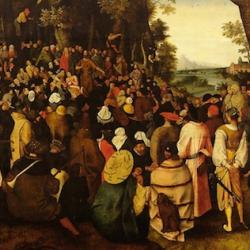I should clarify my final, hurried comments on Brown’s discussion of sin and bad taste. I suggested at the end of the last post that Brown’s initial mapping of the problem contributes to an unsatisfying conclusion regarding moral and aesthetic judgment. Brown argues that taste is community-specific, and thus subject to change over time. In an important sense, what writers of the age of Johnson judged to be good taste does not match what Romantic or Victorian writers judged as good taste, and this is true in spades with regard to medieval tastes.
Applying this same paradigm to moral judgment runs us into some problems. What communities CONSIDER moral and immoral may change over time. And, in certain respects, what IS moral or immoral may change with time. Circumcision, to take an easy case, was demanded in the OT, but in some circumstances today circumcision would be sin (if, eg, it were done as a mark of special status in the church). But in other respects, there are certain actions that are always and everywhere immoral – murder, adultery, idolatry, theft, etc. ?Eregardless of the community’s perception of the morality or immorality. Judgments concerning the immorality of murder are not community-specific, because God is the final Judge.
Can we say the same regarding aesthetic taste? Are there works that are always and everywhere considered excellent? Brown says Yes; the category of classic is not illusory. But, the category of classic may shift over time. And it’s here that I would want to suggest a discontinuity between moral goodness and aesthetic excellence. No amount of time and cultural change will make murder a good; but time and cultural change may turn a rejected or scandalous work into a classic (cf. Ulysses ; Lolita ).
Perhaps we can simply let things rest there. But I’m not satisfied with that conclusion, for the very reasons that Brown points out ?Ethe fact that moral and aesthetic dimensions of a work are often inseparable. In fact, my dissatisfaction (I think) comes from the fact that Brown keeps aesthetics and morals too neatly distinguished. If we dispense with his map, we see to be on stronger ground. For instance, on a more blurry aesthetomoral paradigm, we would not categorize a poem celebrating a vicious murder as “aesthetically pleasing” but “morally repugnant.” The repugnance would be at once, and inseparably, moral-aesthetic. A novel celebrating sodomy could not be aesthetically excellent, nor could a statue used for idolatrous worship.














